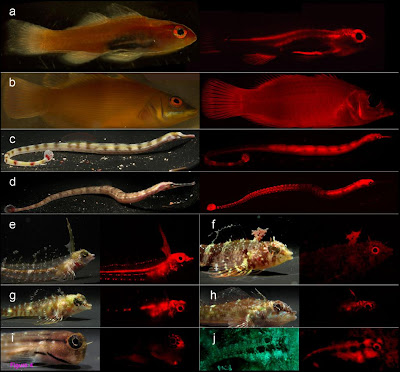 I recently tasted raw habanero chili pepper for the first time. Just to give you an idea they rate at about 200 000-300 000 scoville units, compared to say jalapeños which have a measly 4000. This means that you have to dilute them over 200 000 times in sweet water before they stop burning. Needless to say it wasn't a very good idea and I had a near-death experience as my airways swelled so much that I could no longer breathe for nearly a minute. Do not underestimate the danger of hot peppers, they can be lethal. I was surprised to learn that birds can eat said peppers without so much as a sweat. Apparently it is mostly effective against mammals, and birds are immune to capsaicin, which makes for a clever way to get the damn squirrels out of your bird feeder. All of this is simply a segway to introduce another beer-fueled science debate we had at the pub. Is pain sensation limited to mammals? Warm blooded organisms? vertebrates?
I recently tasted raw habanero chili pepper for the first time. Just to give you an idea they rate at about 200 000-300 000 scoville units, compared to say jalapeños which have a measly 4000. This means that you have to dilute them over 200 000 times in sweet water before they stop burning. Needless to say it wasn't a very good idea and I had a near-death experience as my airways swelled so much that I could no longer breathe for nearly a minute. Do not underestimate the danger of hot peppers, they can be lethal. I was surprised to learn that birds can eat said peppers without so much as a sweat. Apparently it is mostly effective against mammals, and birds are immune to capsaicin, which makes for a clever way to get the damn squirrels out of your bird feeder. All of this is simply a segway to introduce another beer-fueled science debate we had at the pub. Is pain sensation limited to mammals? Warm blooded organisms? vertebrates?You might recall that a while back a (very poorly conceived) paper about fish feeling pain created quite a stir. I suppose it all comes down to your definition of pain. For something we feel so ubiquitously pain's definition is rather elusive. Is it the "discomfort" you feel to a noxious stimulus, is it a reflex as a result of injury, is it the emotional suffering translated by our higher brain centers in response to the stimulus? As somebody who's worked with both fish and rodents I'd be inclined to think that all vertebrates feel pain. In fact by watching how slugs react to a poke, I think they might even be able to feel the essence of it. How else would they have survived this long if they couldn't learn from injuries to stay out of harm's way?
here is what the Wellcome Trust has to say about the subject:
"Nociceptive nerves, which preferentially detect injury-causing stimuli, have been identified in a variety of animals, including invertebrates. Indeed, the leech and sea slug are classic model systems for studying nociception. However, it is believed that invertebrates are capable only of stimulus-response reactions and lack the necessary brain system that vertebrates have to process pain.
In vertebrates, nociceptive information is collated and augmented in the brain and signals are relayed down the nervous system to alter the intensity of pain. All vertebrates possess the primitive areas of the brain to process nociceptive information, namely the medulla, thalamus and limbic system.
However, one area of great importance for pain perception in humans is the cortex and its relative size decreases as we descend the evolutionary tree. For instance, in relative terms, the cortex gets smaller going from humans, through primates, mammals, birds, reptiles, amphibia and finally to fish, which possess only a rudimentary cortex."











 Podcast
Podcast




2 comments:
Post a Comment